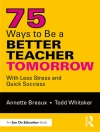The expert guide to the differentiation of curriculum and instruction for the gifted and talented!
Drawing many comparisons and contrasts between gifted and general education best practices, the articles in this volume highlight the many benefits of flexible instruction and curriculum, discuss impediments to the successful adoption of differentiation in classrooms and school districts, and show how educators can overcome these obstacles collaboratively.
Key features include:
- Overview and thought-provoking commentary by Carol Ann Tomlinson, a national leader in differentiation strategies
- A view of differentiation through multiple lenses, and the actual and potential benefits gifted and general education derive from its implementation
- Eleven influential articles from leading researchers and educators in the field of differentiation
Within this valuable reference guide, readers will also find specific models, general curriculum guidelines, specific instructional strategies, and other tools and methods that will help them monitor learner needs and adapt curriculum accordingly.
The ERGE Series:
The National Association for Gifted Children series Essential Readings in Gifted Education is a 12-volume collection of seminal articles from Gifted Child Quarterly. Put the knowledge and power of more than 25 years of research on giftedness and talent into your hands with the leading theories, studies, and findings the experts in the field have to offer.
Tabela de Conteúdo
About the Editors
Series Introduction – Sally M. Reis
Introduction to Differentiation for Gifted and Talented Students – Carol Ann Tomlinson
1. Interface Between Gifted Education and General Education: Toward Communication, Cooperation and Collaboration – Carol Ann Tomlinson, Mary Ruth Coleman, Susan Allan, Anne Udall, and Mary Landrum
2. The Effectiveness of the Schoolwide Enrichment Model on Selected Aspects of Elementary School Change – F. Richard Olenchak, Joseph S. Renzulli
3. The Impact of Staff Development on Teachers′ Ability to Modify Curriculum for Gifted and Talented Students – Sally M. Reis, Karen L. Westberg
4. A Multi-Site Case Study of Successful Classroom Practices for High Ability Students – Karen L. Westberg and Francis X. Archambault, Jr.
5. Open-Ended Activities: Differentiation Through Learner Responses – Nancy B. Hertzog
6. Curriculum Compacting and Achievement Test Scores: What Does the Research Say? – Sally M. Reis, Karen L. Westberg, Jonna M. Kulikowich, and Jeanne H. Purcell
7. Building Bridges Between General Practitioners and Educators of the Gifted: A Study of Collaboration – Jeanne H. Purcell, Jann H. Leppien
8. Changing General Education Classroom Practices to Adapt for Gifted Students – Susan K. Johnsen, Patricia A. Haensly, Gail R. Ryser, and Randal F. Ford
9. A Curriculum Study of Gifted-Student Learning in the Language Arts – Joyce Van Tassel-Baska, Li Zuo, Linda D. Avery, and Catherine A. Little
10. Practices of Preservice Teachers Related to Gifted and Other Academically Diverse Learners – Carol Ann Tomlinson, Ellen M. Tomchin, Carolyn M. Callahan, Cheryll M. Adams, Paula Pizzat-Tinnin, Caroline M. Cunningham, Barbara Moore, Lori Lutz, Chris Roberson, Nancy Eiss, Mary Landrum, Scott Hunsaker, and Marcia Imbeau
11. Deciding to Differentiate Instruction in Middle School: One School′s Journey – Carol Ann Tomlinson
Index
Sobre o autor
Sally M. Reis is a professor and the department head of the Educational Psychology Department at the University of Connecticut where she also serves as principal investigator of the National Research Center on the Gifted and Talented. She was a teacher for 15 years, 11 of which were spent working with gifted students on the elementary, junior high, and high school levels. She has authored more than 130 articles, 9 books, 40 book chapters, and numerous monographs and technical reports. Her research interests are related to special populations of gifted and tal-ented students, including: students with learning disabilities, gifted females and diverse groups of talented students. She is also interested in extensions of the Schoolwide Enrichment Model for both gifted and talented students and as a way to expand offerings and provide general enrichment to identify talents and potentials in students who have not been previously identified as gifted. She has traveled extensively conducting workshops and providing profes-sional development for school districts on gifted education, enrichment programs, and talent development programs. She is co-author of The Schoolwide Enrichment Model, The Secondary Triad Model, Dilemmas in Talent Development in the Middle Years, and a book published in 1998 about women’s talent development titled Work Left Undone: Choices and Compromises of Talented Females. Sally serves on several editorial boards, including the Gifted Child Quarterly, and is a past president of the National Association for Gifted Children.












